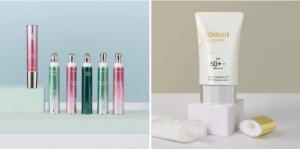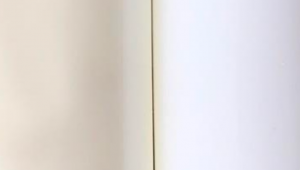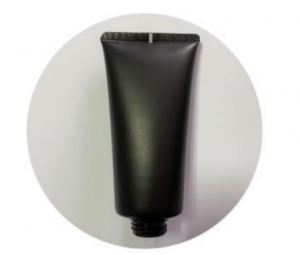Hose is an important part of daily chemical packaging, widely used in product fields such as hand cream, cleansing products, sunscreen products and so on. Traditional hose surface coatings are mainly solvent-based two-component polyurethane coatings. Although two-component polyurethane coatings have excellent performance in terms of coating flexibility and secondary printing (bronzing), their performance is as high as 80%. The above VOCs content makes it restricted in application, especially in recent years, with the continuous strengthening of the environmental protection awareness of the country and citizens in our country, the production and use of high VOCs content coatings are subject to strict supervision. It has reached a consensus that environmentally friendly hose coatings can replace traditional high VOCs content coatings.
At present, the recognized environmentally friendly coatings include: 1. Water-based coatings with a VOCs content of less than 10%; 2. High-solid coatings or even full-solid coatings with a solid content higher than 85%. Since the current hose base material is mainly polyethylene (PE) material, the characteristics of low surface tension and low polarity of this type of material make water-based coatings have no mature application precedents in hose coating. High-solid UV-curable coatings (UV-curable coatings) have become the first choice for environmentally friendly coatings for hoses at this stage because of their high efficiency, energy saving, and environmental protection. However, due to the characteristics of UV-curable coatings, when people use UV-curable coatings for the production of daily chemical hose packaging materials, they will generally encounter problems such as poor light aging resistance of the coating, easy yellowing, cracking of the coating, matte Poor wear resistance, difficult secondary printing (bronzing), unfriendly smell after painting, etc.
This article will start from the basic principles of UV curing coatings, combined with the actual application, and deeply discuss the above-mentioned main problems in the process of coating and secondary decoration of hose packaging materials used in daily chemicals. On the basis of optimizing the coating formula, according to The specific actual situation of the packaging material manufacturer gives specific solutions to these problems.
Introduction to UV Curing Coatings
Photocuring is a rapidly developing “green” new technology. Since the 1970s, photocuring technology has been widely used in coatings, inks, crosslinking agents and medical fields. Among them, ultraviolet light curing (UV curing) technology is currently the most widely used light curing technology. UV coatings are mainly composed of photoinitiators, unsaturated resins and monomers, surface control additives and necessary pigments and fillers. In the field of surface decoration of daily chemical packaging materials, UV curing technology is widely used in spraying, printing and other fields. In the coating of daily chemical hose packaging materials, UV-curable coatings are characterized by fast curing, high surface gloss, excellent scratch resistance, and high solid content. As an emerging environment-friendly coating material, in recent years more and more people’s attention.
However, like any other material, UV-curable coatings also have problems such as yellowing, cracking, and poor wear resistance during use. This article will focus on discussing various common problems of UV coatings applied to hoses. , starting from the causes of the problems, put forward the methods to solve these problems from the coating formula design to the coating construction process.
Main problems and solutions when UV curing coatings are applied to daily chemical hose packaging materials
一. Causes and solutions of yellowing
The main reason for the yellowing of UV-cured coatings is that the coating contains molecular structures that can absorb ultraviolet light of a specific wavelength. After absorbing ultraviolet light of a specific wavelength, these substances produce energy level transitions and eventually cause oxidation of the coating. When the degree of oxidation is not high, it will turn yellow in appearance, commonly known as “yellowing”.
(Left picture – yellowing phenomenon, right picture – normal)
The main components in UV coatings that can absorb ultraviolet light are:
1. Photoinitiator residue (this is the most important substance that causes yellowing)
2. Molecular structure containing UV activity (this part of the UV coating is mainly a substance containing a benzene ring structure in the UV resin or monomer)
3. Residual uncured unsaturated bonds, and other easily oxidizable substances (such as amino groups, etc.)
二、Causes and solutions of coating cracking
The main reasons for the bending and cracking of the coating: 1. The adhesion of the coating to the substrate is not good; 2. The elongation at break of the coating is low after curing. The popular saying is that the toughness of the coating is not good.
Solutions for coating cracking:
1. Starting from formula design, provide coatings with better adhesion and toughness;
2. From the control of the coating process, the specific methods are: 1. Pretreatment of the substrate, such as flame, corona and other treatments on the substrate or pre-treatment of the pre-coating treatment agent, to increase the surface polarity of the substrate and improve the quality of the substrate. 2. During the coating process, the coating thickness should be appropriately reduced, and the curing temperature and UV curing energy should be increased.
三、Causes and solutions of unfriendly smell
The coated hose will smell a pungent smell when the product is placed, especially if the product is sealed in the packaging bag for a long time, when the packaging bag is opened. The main reason for these pungent odors is that low-boiling small molecular compounds remaining in the paint film migrate to the surface of the coating over time, volatilize into the air, and accumulate continuously in a closed environment. The sources of these low-boiling small molecular compounds are mainly residual solvents (solvents that are not completely volatilized), residual small molecular monomers (incomplete curing), and small molecular compounds produced by photoinitiators and their cracking (commonly known as initiator residues). ).
Ways to solve the smell after curing:
1. Starting from the formulation design, use a highly active initiator system to reduce the amount of initiator used; increase the content of multifunctional components in the system, and use appropriate plasticizing components to reduce the amount of small molecule monomers, especially monofunctional small molecules. Monomer usage.
2. From the perspective of coating process control, appropriately reducing the coating thickness, increasing the curing temperature, and UV curing energy can reduce the generation of unfriendly odors.
四. Reasons and solutions for poor scratch resistance of matte hose
The reason for the poor scratch resistance of the matte coating is that the matte effect of the coating is mainly produced by the diffuse reflection of the coating surface on the light, and the diffuse reflection of the coating surface is mainly caused by the roughness of the coating surface and the coating surface. Incompatibility of the layer itself arises. When a rough surface is rubbed, it will bring greater friction, causing the coating to be more prone to scratches than a high-gloss surface. In addition, the powder substances in the matte coating will destroy the integrity of the coating surface to a certain extent, which is one of the reasons why the matte coating is more likely to be scratched than the glossy coating.
(The matte tube is easy to scratch and turn white when rubbed)
Solutions for scratches:
1. Starting from the distribution design, using part of the matte resin to replace the powder components in the paint can reduce the roughness of the coating surface and increase the pigment-base ratio of the coating under the premise of ensuring the matte degree of the coating, and finally achieve Improves scratch resistance of matt coated surfaces.
2. Starting from the control of the coating process, appropriately reducing the coating thickness, increasing the curing temperature, and UV curing energy can improve the scratch resistance of the matte coating surface.
五. Reasons and solutions for poor hot stamping performance
The main reasons for poor hot stamping performance are: 1. The coating does not match the hot stamping paper, resulting in incomplete hot stamping or poor adhesion; Second, the process control during hot stamping is unstable.
Solutions for poor hot stamping:
1. From the perspective of formulation, Weixi Chemical creatively introduces substances with temperature-sensitive properties into the formulation. Such substances have high hardness and low surface tension at room temperature, but when the temperature reaches or exceeds its phase transition temperature, This type of material undergoes a phase transition with a sharp decrease in hardness accompanied by an increase in surface tension. During the hot stamping process, since the temperature of the hot stamping part rises rapidly above the phase transition temperature of the substance, the hardness of the hot stamping part is greatly reduced and the surface tension is increased, thereby improving the adhesion between the hot stamping paper and the coating and the integrity of the hot stamping . When the bronzing process is completed, the temperature drops below the phase transition temperature and the hardness of the coating recovers.
2. From the perspective of process control, give priority to choosing the bronzing paper and process that match the coating, and appropriately increase the bronzing temperature and pressing force during bronzing, which is conducive to improving the integrity and adhesion of bronzing.
UV-type PE hose varnish will gradually replace two-component polyurethane coatings. It is a national safety production, clean production, carbon emission reduction, and environmental protection requirements. Some problems that arise during the construction of UV varnish can be solved by varnish. The formula adjustment of the manufacturer, the process adjustment of the equipment manufacturer and the hose factory are jointly solved.
Shanghai rainbow industrial co.,ltd provides one-stop solution for cosmetic packaging.If you like our products, you can contact us,
Website:www.rainbow-pkg.com
Email: Bobby@rainbow-pkg.com
WhatsApp: +008615921375189
光固化是一种快速发展的“绿色”新技术,从20世纪70年代至今,光固化技术已广泛应于涂料,油墨,交联剂以及医疗等领域。其中紫外光固化(UV固化)技术是目前应用最为广泛的光固化技术。UV涂料主要由光引发剂、不饱和树脂及单体、表面控制助剂以及必要的颜填料组成。在日化包装材料表面装饰领域,UV固化技术被广泛应用于喷涂,印刷等领域。在日化软管包装材料涂装中,UV固化涂料以其快速固化、表面光泽高、耐刮擦性能优异、固含量高的特点,做为一种新兴的环境友好型涂装材料,近年来越来越引起人们的关注。
然而,同其他任何材料一样,UV固化涂料在使用过程中也会存在诸如黄变、开裂、哑光耐磨性差等问题,本文将重点就应用于软管的UV涂料常见的各种问题进行讨论,从问题产生的原因出发,提出从涂料配方设计到涂料施工过程的解决这些问题的方法。
Post time: Jan-06-2023




